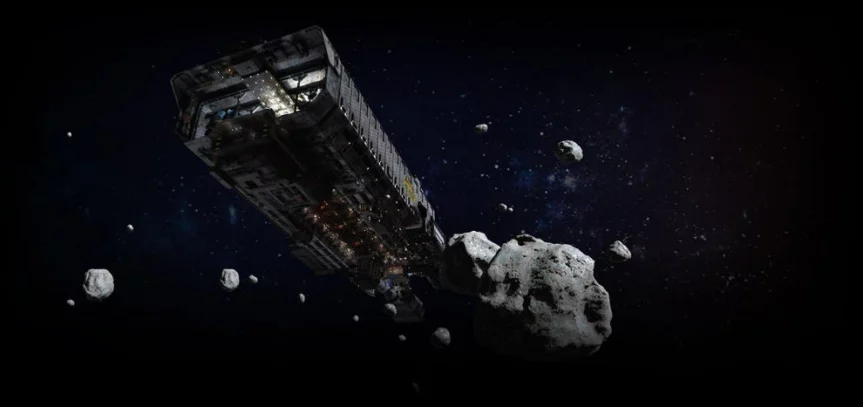As our civilization has evolved, we’ve gone from gathering resources above ground for our shelters and day-to-day lives. Wood, stone, and natural fibers all functioned as the backbone for early human civilizations.
But as time went on, we started to look deeper, digging through the ground at our feet to discover iron ore and other precious metals.
And at this point in time, we’re pretty familiar with all the resources Earth has to offer, and are making quick use of them.
So, it begs the question: Where will we turn for resources once the Earth’s bounty has been depleted?
The answer is space. And mining in space might be closer to reality than we think.
Codexes for Space Miners
Science fiction writers have been thinking about this issue for a long time. Mining asteroids is a popular element of many space opera novels.
Pushing Ice by Alastair Reynolds has characters mining cometary ice in our solar system. Leviathan Wakes by James S. A. Corey opens with the ship Canterbury hauling that same ice to Ceres Station. Powerstat by Ben Bova investigates harnessing massive amounts of solar energy from space. Countless other novels explore the idea of collecting resources from space, like The Web Between the World by Charles Sheffield and Macao Station by Mike Berry.
It’s fair to say that space miners are a critical part of many space operas, but how close to reality are these sci fi stories?
What Are We Mining in Space?
A recent article from Scientific News states that the collision of two neutron stars can produce massive amounts of heavy metal, like gold and platinum.
When two dead stars collide, debris and other materials are shot out into space. Eventually, they’re transformed into familiar heavy metals through a phenomenon known as the r-process.
This process occurs when “atomic nuclei climb the periodic table, swallowing up neutrons and decaying radioactively”.
But this is old news, these discoveries are at least 5 years old at this point. Yet, this data suggests that in the future, we might be mining more than just asteroid ice in space.
Not only could we collect gold and platinum from space, but mining asteroids could yield nickel, cobalt, iron, aluminum, and a slew of other materials, including hydrogen, one of the proponents of rocket fuel.

Urgently Hiring: Space Miners
An article by Alex Gilbert in the Milken Institute Review, published in April 2021, claims that mining in space might happen as soon as 2024.
NASA recently handed out contracts to four companies, allowing them to extract sample material from the moon. The moon will probably be a hotspot for mining and exploration, with it being only a few days’ journey from Earth. Studies of have shown that there are large, frozen deposits of water in many of the moon’s craters, and who knows what’s lying under the surface.
But, just like in the works of science fiction we so revere, scientists are setting their sites farther than the moon. Asteroids and other moons—include those of Mars—are targets for potential mining operations. Japanese and Chinese space missions are already planned to bring back samples from one of Mars’ moons.
However, the realm of interplanetary mining gets into some sticky legal red tape. There isn’t a formal set of guidelines of who gets to mine what, or colonize where. Space law is still in its infancy, but the US, Luxembourg, and the United Arab Emirates are leading the charge in developing space-resource laws.
But certain treaties pose as roadblocks for space exploitation, and for good measure. The Outer Space Treaty of 1967 states that no celestial bodies shall be exploited for national gain. We can only assume that must also apply to individuals such as Jeff Bezos and Elon Musk, who have set their eyes on the stars as a way to line their pockets.
The difficulty of ironing out interplanetary doctrines between all the nations gives the technology ample time to meet the standards for widespread mineral harvesting.
See You Later, Space Miner
All of this is to say that sci fi worlds filled with space miners, pirates, and intergalactic diplomacy might not be far off. While we might not see it in our lifetimes, the foundations for mineral exploitation and far-flung space travel are under construction as we speak.
And our successors might not just be chunking up space ice, but rather harvesting gold, platinum, and other precious metals from neutron star fallout and hefty cash-cow asteroids.
But what do you think? What will become the most valuable resource in space? Hydrogen? Iron? Let us know in the comments below.

